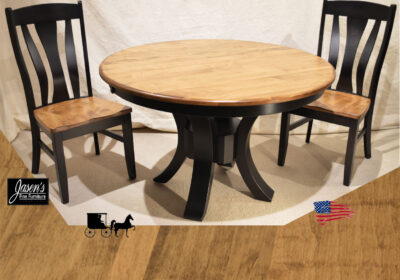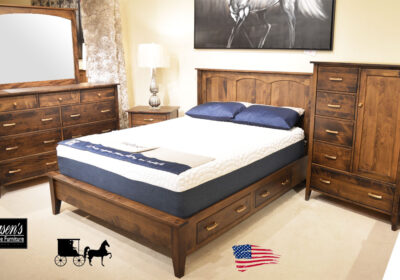Amish Furniture Design

Amish Furniture Design
Amish furniture has earned a reputation for excellence among consumers seeking options a cut above the rest of the competition in terms of quality construction, dedication to detail, and durability defined not by years but decades. Whether the prospective shopper is seeking a single sofa or a complete living room set including matching end tables, a bedroom collection or all the essentials to a home office collection, it’s understood any pieces of hand-crafted Amish furniture prominently feature the intangible qualities that have separated the “Amish-constructed” works from any competitors. Not all those overwhelmingly positive attributes fly beneath the radar, however. There are some characteristics visible even to the untrained eye that speaks to the nature of Amish furniture in a class entirely of its own.
Consider, for example, one of the characteristic methods often associated with Amish-built furniture that involves how joints are connected: dovetail joints. While style and function can play an important point in determining whether the Amish artisan opts for the keystone joint, mortise joint or the dovetail joint, many craftsman have developed a preference for the signature dovetail joint due in no small part to the joint’s reputation for a combination of strength and aesthetics.
Dovetail joints are defined by the interlocking strength of the notches cut into the wood (a style that harkens back to childhood and the interlocking strength of Lincoln Logs, a childhood construction toy staple). The end result is one of the strongest joints available in furniture construction, accompanied by a refreshing silence when it comes time to close a drawer benefitting from the dovetail joint. Why? Quite simply, the dovetail joint’s clever construction eliminates the need for the pesky metal equipment that can eventually make noise through normal wear and tear.
Utilizing dovetail joints in the construction of Amish furniture is just one of many of the shining examples that separate these pieces from all others in the marketplace. Each piece of Amish furniture is literally a unique piece of art, as each kitchen chair, dining room table, coffee or end table or any other home furnishing is being crafted by an artisan trained in the same fashion as their fathers and grandfathers.
Compare this time-honored approach to constructing durable, attractive furniture in the United States of America with carefully selected wood to a less appealing assembly line approach of mass production. Involving – at best — limited human intervention, mass-produced and cheaply constructed furniture tracing roots from anywhere on the globe can arrive on the U.S. coastline after a lengthy transit over the ocean. Made to the specifications of a machine, mass-produced furniture focuses exclusively on function with little regard to form; there is virtually no sense of individual self expression that a typical homeowner desires the most.
When the time is right to furnish a home of any size, there’s an undeniable thrill to visiting furniture stores far and wide to find the items that will turn a house into a home. Fortunately, Amish furniture presents savvy consumers a unique opportunity to customize their dwellings with pieces suitable for passing along to another generation.


